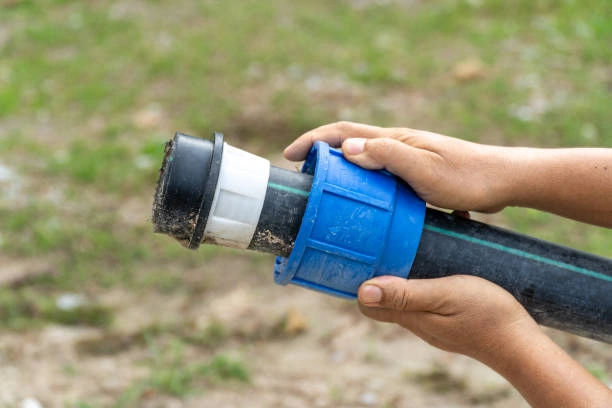When you turn on the faucet or flush a toilet, you probably don’t think much about the pipes hidden behind walls or buried underground. Yet, the materials those pipes are made of play a crucial role in ensuring clean water delivery and efficient waste removal. Among the most reliable and corrosion-resistant options available today is High-Density Polyethylene (HDPE) piping.
HDPE isn’t just another plastic—it’s a game-changer in modern infrastructure. Lightweight, durable, and resistant to chemicals and rust, HDPE pipes are increasingly replacing traditional metal and concrete pipes in water supply, gas distribution, and even industrial applications. But what makes HDPE so special? And why should we care about it?
Let’s dive into the science, benefits, and real-world applications of HDPE piping—and discover why it might just be the unsung hero of modern plumbing.

What Is HDPE?
High-Density Polyethylene (HDPE) is a thermoplastic polymer made from petroleum. It’s known for its high strength-to-density ratio, meaning it’s both tough and lightweight. Unlike metals, HDPE doesn’t corrode, rust, or react with most chemicals, making it ideal for transporting water, chemicals, and even hazardous waste.
HDPE pipes are created through an extrusion process, where melted plastic is shaped into long, seamless tubes. Because they lack joints (unlike PVC or metal pipes), they’re less prone to leaks and cracks.
Why HDPE Outperforms Traditional Piping Materials
1. Corrosion Resistance
Metal pipes—like iron, steel, or copper—eventually corrode when exposed to water and chemicals. Rust weakens the structure, leading to leaks and contamination. HDPE, on the other hand, is completely immune to rust and chemical degradation, making it perfect for:
- Drinking water systems
- Sewage and wastewater transport
- Industrial chemical lines
2. Flexibility & Durability
HDPE pipes can bend without breaking, making them ideal for earthquake-prone areas or shifting soil conditions. Unlike rigid materials (like concrete or cast iron), HDPE won’t crack under pressure.
3. Lightweight & Easy to Install
Imagine carrying a 20-foot steel pipe versus a 20-foot HDPE pipe. The HDPE version is much lighter, reducing labor costs and installation time.
4. Long Lifespan
While metal pipes may last 20-50 years before needing replacement, HDPE pipes can last 50-100 years with minimal maintenance.
5. Eco-Friendly
HDPE is recyclable, reducing waste in landfills. Plus, its smooth interior reduces friction, meaning less energy is needed to pump water through it.
Real-World Applications of HDPE Piping
● Municipal Water Systems
Many cities are switching from old iron pipes to HDPE to prevent lead contamination and leaks.
● Gas Distribution
HDPE’s leak-resistant nature makes it safer for transporting natural gas.
● Mining & Industrial Use
Chemical plants use HDPE to safely transport acids and other harsh substances.
● Agricultural Irrigation
Farmers rely on HDPE for drip irrigation systems because it resists clogging and UV damage.
The Future of HDPE Piping
As infrastructure ages, the demand for long-lasting, low-maintenance piping will only grow. HDPE is already being used in innovative ways, such as:
- Trenchless pipe repair (slip-lining old pipes with HDPE liners)
- Ocean outfall systems (carrying treated wastewater out to sea)
- Geothermal heating systems (due to its heat resistance)
With advancements in material science, we may soon see smart HDPE pipes embedded with sensors to detect leaks in real time!
FAQs About HDPE Piping
1. Is HDPE piping safe for drinking water?
Yes! HDPE is non-toxic and FDA-approved for potable water. Unlike metal pipes, it doesn’t leach harmful chemicals.
2. Can HDPE pipes handle high temperatures?
HDPE can withstand temperatures up to 140°F (60°C). For hotter liquids, specialized plastics (like CPVC) may be needed.
3. How does HDPE compare to PVC pipes?
While both are plastic, HDPE is more flexible and impact-resistant, whereas PVC is rigid and better for high-pressure systems.
4. Does HDPE degrade in sunlight?
Untreated HDPE can weaken under prolonged UV exposure, but black HDPE pipes (with carbon black additives) are UV-stabilized for outdoor use.
5. Can HDPE pipes be recycled?
Absolutely! HDPE is 100% recyclable, making it an eco-friendly choice compared to non-recyclable materials.
Final Thoughts
HDPE piping might not be as flashy as the latest tech gadget, but its impact on modern infrastructure is undeniable. From ensuring clean drinking water to supporting industrial operations, HDPE’s corrosion resistance, durability, and sustainability make it a material worth celebrating.
Next time you take a sip of water or see a construction crew laying pipes, remember—there’s a good chance HDPE is working behind the scenes, keeping our world flowing smoothly.
Would you trust HDPE pipes in your home? The evidence suggests you should! 🚰💧


















